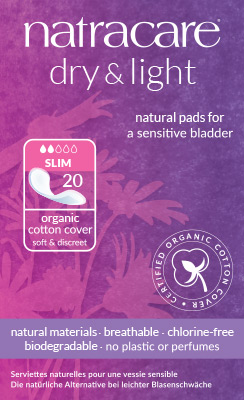I’m Elaine Miller, a physiotherapist, based in Edinburgh. I used to work in backs and necks and sports, and now I work in pelvic health. Stand-up comedy was my hobby but I combined that with work when I wrote a comedy show about pelvic floors; “Gusset Grippers”. I have three teen or nearly-teen kids who find me embarrassing and a whole house full of pets, including an iguana.
How did you get into working with pelvic floors?
I had three babies in four years – should be fairly self-explanatory. I’ve noticed that lots of healthcare professionals who work in continence have either got personal experience with incontinence or someone very close to them does. It’s a field that clinicians get very passionate about because we understand the impact incontinence can have on a person’s life – and how easily problems can often be solved.
What is a pelvic floor?
A pelvic floor is a series of muscles that sit at the bottom of your pelvis. Their job is to support your internal organs like your bladder, bowel and uterus, (if you have one). They also make up your sphincters which hold your holes shut when you want them to be shut and relax to let waste out or to allow penetration.
The muscles are not fixed like a floor is, though; they rise and fall in time with your breath. Muscles which cannot relax and lengthen can be as problematic as ones which are too weak. That’s why it’s important that you keep breathing when you do your pelvic floor exercises, so you get a better contraction. The muscles are complex, but they all do the same thing: squeeze and lift. To work them properly, try visualising being somewhere posh and feeling like you are about to pass wind – the action of desperately trying to hold in gas is you working your pelvic floor.
How was your experience of incontinence?
Hugely embarrassing! That was a first for me; I had honestly never felt embarrassed by anything beforehand – there’s a reason I landed up working in genitals. Women tend to shoulder most of the care needs of their family – and we tend to put ourselves last on our “to do” list. It takes seven years, on average, to seek help, and this usually happens after she’s had a really embarrassing incident. In my case, I wet myself on my doorstep in front of my neighbour – not ideal. The humiliation of that was enough to push me into doing my pelvic floor exercises, and I’m totally fine now. And I’m now also pretty evangelical about the power of pelvic floor exercises!
What’s a day in your life like now, post-incontinence?
Same as it was before, only now I don’t think about my bladder! I don’t panic if traffic is slow and I need a pee; I am totally unaware of where the nearest toilet is; I am able to leave the house without a bagfull of spare clothes. Oh, and the rumour about how sorting your pelvic floor out improves your orgasms? Seems to be true.
What do you think of Natracare’s products?
I’m a fan, for sure! In my role, I am primarily concerned about the physical and mental effects incontinence imposes on people, but there are huge environmental issues too. Natracare’s products are compostable and that is a huge advantage. The average pad use is four a day, so this quickly adds up and it’s a disaster if all of those pads are made from plastic and are going into landfill.
Natracare’s Dry & Light incontinence pads are comfortable and work just as well as plastic based alternatives. It’s a no brainer to recommend people with stress incontinence should use Natracare’s products. I really appreciate the stance that Natracare takes on pads – as far as I am aware, you are the only manufacturer who actively encourages people to seek help for their incontinence; other companies try to normalise leaking, which is just not helpful.
Tell us about your Edinburgh Fringe show
It’s great fun to be in the Fringe! The show sold out last year and was given 5*, so I was fairly chuffed with that. The trick to comedy is to find humour in issues which make people feel vulnerable – so incontinence, prolapse and sexual dysfunctions provide plenty of material. The joke is always on me though, I don’t pick on anyone or ask anyone questions about weeing themselves. My aim is for the audience to leave knowing what their pelvic floor is, what it does, why having a good one is important and where to take theirs if they think they need help. There’s a clitoris puppet; a prolapse chicken; a 5’4” singing vulva and some nice freebies. The show is evidence based and so it counts as CPD (continuing professional development) for healthcare professionals, which I find very amusing indeed.
If there’s one thing you would like other people to know about incontinence, what would it be?
That leaking is common, but it’s not normal. These issues are bread and butter to GPs and specialist physios like me.
You might feel alone because people don’t talk about it, but so, so many people experience incontinence
Please don’t put up with it; come to clinic and I guarantee you’ll improve. The majority of people can be helped, if not cured – which is why it’s so exciting to see a company like Natracare discussing the issues in a positive way.
Learn more about Elaine Miller’s Edinburgh Fringe show. Find out about Elaine’s upcoming shows and your pelvic floor at Gusset Grippers!














Thank you for the engaging Q&A with Elaine Miller, blending humor and expertise in pelvic floor health. It’s refreshing to see such informative content presented in an accessible and entertaining manner.